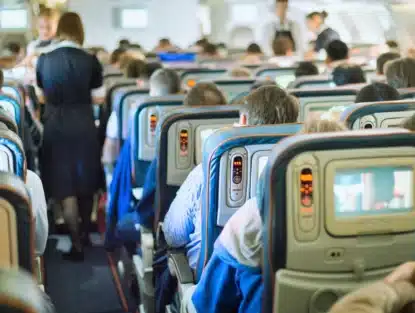
13 Sep, 2016
Turbulence Causes a Wave of Injuries for Flight AttendantsRecent reports reveal that severe turbulence has been responsible for a wave of injuries involving…

Falls by the Numbers
According to data collected by the Bureau of Labor Statistics in 2009, 605 workers died and a further 212,760 were injured due to fall-related incidents. The majority of fatal fall accidents are concentrated in the construction industry while health services, retail, and wholesale industries accounted for the majority of non-fatal fall injuries. It is estimated that fall-related deaths and injuries cost the United States around $70 billion a year in healthcare costs and lost productivity.
In response to these figures, the Occupational Safety and Health Administration (OSHA) instituted several fall prevention programs and seminars to educate workers and employers about the dangers of falls. These concentrated efforts resulted in diverse initiatives such as National Stand Down Day to observe fall safety and free online safety training videos.
Since the institution of these programs, the number of deaths and serious injuries associated with falls has dropped significantly. In 2014, 359 workers died due to fall-related injuries and events.
But these programs do not address the vast majority of fall-related injuries which are nonfatal and occur in the retail / wholesale industry and health services providers. The retail industry includes any company that actively depends on the sale of products to customers from large stores, like Best Buy, to mom-and-pop shops.
Wholesale, generally, refers to distribution centers for these retail stores. These businesses do not entertain many public clients instead most of these workers are on their feet moving heavy loads.
The health services industry covers every health providing entity from hospitals to doctors’ offices. Most fall-related injuries are focused in hospitals, in-patient care facilities, nursing homes and other operations that entail a fast paced work environment. The combination of fatigue, constantly moved heavy equipment, spilled liquids and other hazards make hospitals dangerous places for healthcare workers. In fact, there is an entire subset of insurance and health training seminars that are devoted to reducing rates of slips and trips in hospitals to protect caregivers and patients.
Primary Causes
The circumstances that underlie most falls involve slippery floors, cluttered walkways, and loose cords. Simple fixes like keeping walkways clear and keeping cords along the walls can prevent many work-related falls. Most large employers will include brief training to advise workers on proper safety, like removing debris from walkways and keeping cords tucked against walls.
In the construction industry, the common causes are unstable walkways, unprotected edges, holes in the floor, improperly placed ladders, misused fall prevention equipment and wall openings. Unfortunately, the construction environment is so variable that the best safety protocols are simply to stay alert.
In retail and warehousing, most falls are caused by loose objects, poor lighting, and worker fatigue.
Thousands of hospital workers and patients fall every year due to slippery floors, tangled cords, errant pieces of equipment and other various impediments. Hospitals are fast-paced. Staff continually move heavy pieces of equipment from room to room. There is a constant deluge of spilled liquids, dropped tools, mislaid medicine bottles, and other hazards to trip up feet. In fact, an entire safety industry is built around training hospital staff to identify and remove fall and trip hazards.
Fall Prevention
According to a workers’ compensation attorney in Chicago, employers can prevent the majority of falls with proper equipment, safety protocols, and training. All employers should train their employees on the best ways to address fall hazards. A good general rule is to remove them. If that is not possible, then a temporary solution is to set up a method to alert people to the danger (i.e. wet floor signs). Then the manager should be made aware of the situation and asked to correct it.
OSHA also recommends more substantive solutions such as guardrail systems and anti-slip floors. It is unrealistic to expect everyone to remain alert at all times. Therefore these systems are designed to save workers who occasionally lose focus.
OSHA also gives recommendations that are industry specific. For example, construction workers are advised to employ personal arresting systems and/or safety nets for any job that takes them ten or more feet in the air. Similar to guardrails, these systems are only there to prevent a serious or fatal fall, not to prevent falling itself.